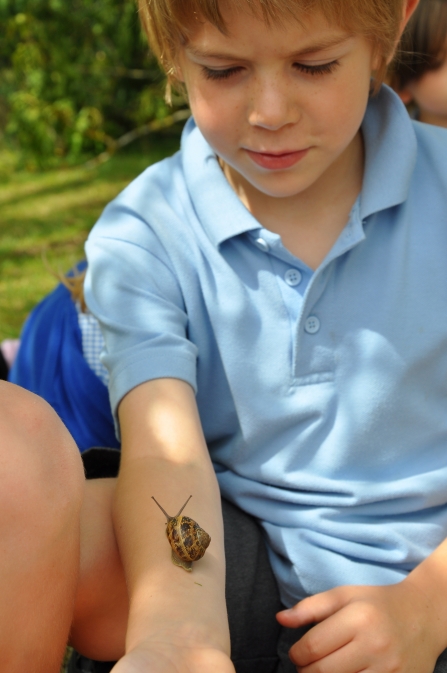
Credit: Emma Bradshaw
Let's start with the weird and wonderful - Slug blood is green. Really. There is a fascinating article about the reasons why many invertebrates have green blood here.
Slugs can live for about 6 years, but their eggs can lie dormant for years before hatching when conditions are right. Also they can have up to 27,000 teeth. Guess I’m not sleeping tonight…
BUT – they do eat decomposing vegetation so are important ecologically. Indeed, some go even further as reported in the early spring of 2012 when Dr Ian Bedford, Head of Entomology at the John Innes Centre, Norwich, noticed an unusually high number of slugs in his garden and observed they were not just eating plants but other things too such as dog excrement and dead animals. After some further research and collaboration with Dr Les Noble, University of Aberdeen, it was discovered that these were Spanish slugs, Arion vulgaris, and this was the first mass observation of this species within the UK. To date there has been only one record of Spanish slugs in the region – so please keep a look out!
Many people don’t like slugs and snails in their lovingly cultivated gardens, in fact British Gardeners use some 650 billion slug pellets per year! Please find an alternative – the poison from slug pellets enters the food chain and kills hedgehogs, who consider slugs and snails as a tasty treat. But did you know hedgehogs don’t like slimy slugs (can’t really blame them) – so they use their paws to scrape off the slime before gobbling them down!
One snail can have 430 babies a year, and each snail can have up to 14,000 teeth – and that’s the stuff of nightmares! Hedgehogs are natural pest control, there are lots of ways you can entice them to your garden, look at our top tips here.
There are lots of ecologically friendly ways to discourage slugs – take a look here. But before you collect and rehome them – please have a look and see if you can identify it, even better, take a photo and send it to EcoRecord.
EcoRecord collects, collates and makes available information about the wildlife, wildlife sites and habitats of Birmingham and the Black Country and currently has over 500,000 species records on its database. Find out more and submit your own sightings here.
Molluscs (Slugs, Snails, Mussels and Limpets) are a much under-recorded group in Birmingham and the Black Country. There are 2491 records on our database of 105 species including 3 Species of limpet, 17 species of mussel, 20 species of slug and 65 species of snail (45 species of which are freshwater snails)
Most commonly recorded slugs across Birmingham and the Black Country are Arion ater - large black slug, Deroceras reticulatum - Netted field slug and Arion hortensis - Blue-black soil slug.
Our most commonly recorded snails are Radix peregra - Wandering snail, Potamopyrgus antipodarum - Jenkins' spire snail and Lymnaea stagnalis - Great pond snail. These are all freshwater snails which live in rivers and ponds and represents the amount of specialist surveys carried out on these habitats.
Our top recorded land snails (i.e. ones you might find in your garden) are:
Cornu aspersum - Common Garden Snail, Discus rotundatus - Rounded snail, Cepaea hortensis - White-lipped snail.
While writing this article I also discovered that woodlice excrete ammonia gas through their exo-skeleton but that’s for another time…
STOP PRESS - After speaking to our friends at Slugwatch, EcoRecord tell me that there is some disagreement about whether Spanish slug is an invador and it could be a native species. Watch this space...
